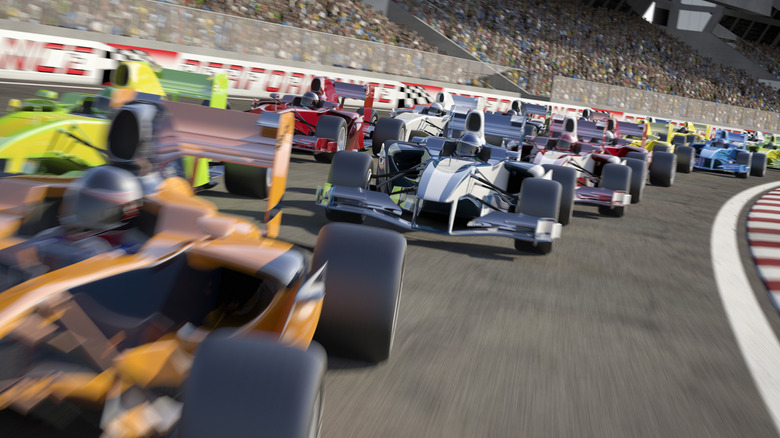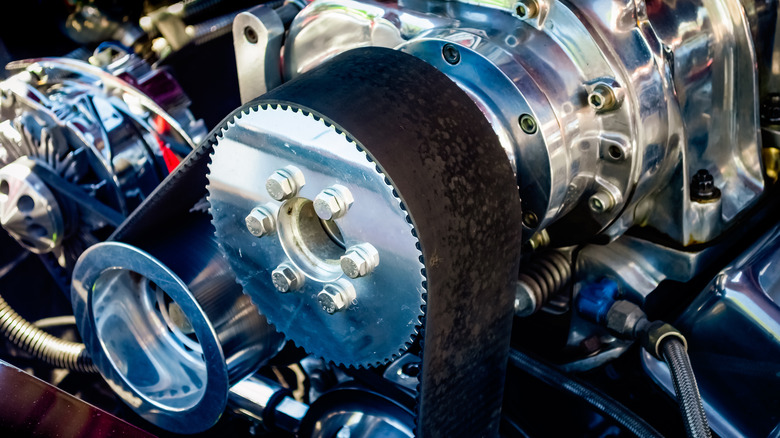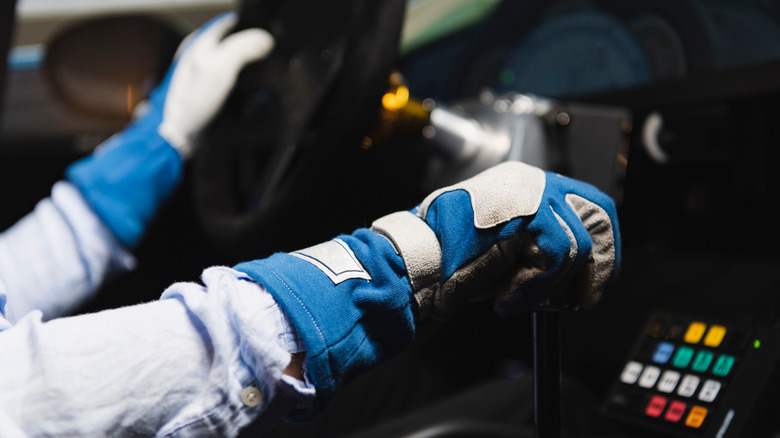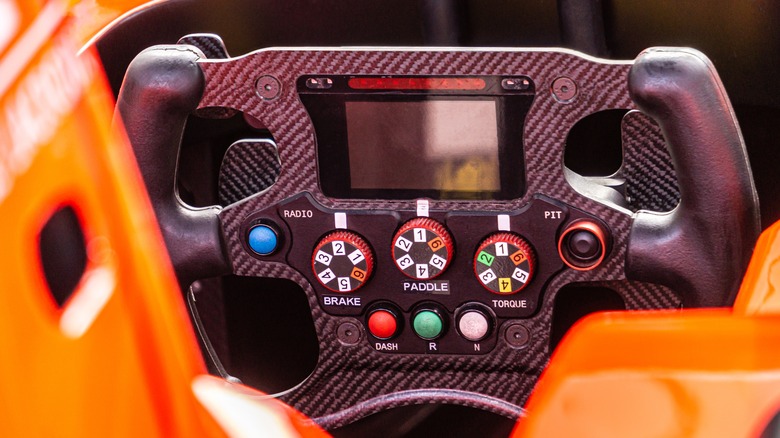What Makes Racing Transmissions Different From Regular Cars
If you think about it in the broadest terms, all cars are designed to do the same thing: move you around on four wheels at a faster speed than walking. However, it's the last part of that sentence that deserves special notice: "a faster speed than walking." All cars go fast, relatively speaking, but a regular car isn't actually meant to go that fast. After all, you can't drive a car at super-high speeds on a residential road, it'd be too dangerous.
Cars that are intended to be driven on a race track, on the other hand, have more room to stretch their proverbial legs. In a circumstance where high speed is not only permitted, but encouraged, a car needs more power to really make a name for itself. This is why race cars utilize different transmissions from the rank and file wagons at your local dealer. But what exactly differentiates these transmissions from the ones present in personal vehicles?
Higher power and the strength to handle it
As you'd expect from a vehicle designed to go as quickly as possible, a race car typically uses a larger, more powerful engine than a consumer-grade vehicle. If you tried to attach an engine with that kind of output to a regular transmission, the entire thing would shake itself to pieces as it tries to pass the torque onto the wheels. This is why race-ready transmissions are just as beefy as the engines they're attached to.
Racing transmissions typically feature a sturdy, robust design that can weather the intense rotational power generated by a racing engine. Not only that, but a racing transmission is also intended to maximize the level of torque transferred to the wheels from the engine. In this way, a racer can put the pedal to the metal, confident that every bit of horsepower from the engine is going straight to the wheels for the highest possible speed.
Laser precision shifting
When you're out on the race track, even a single second wasted shifting gears can mean the difference between second and first place, not to mention a moment of distraction that could result in a pile-up. This is why race-ready transmissions need to not only be powerful, but incredibly precise to minimize these interfacing moments as much as possible.
Racing transmissions are set up in such a way that gear changes can be completed in a fraction of a second. They're optimized to prevent transmission problems, such as gear sticking or slipping, which also gives drivers a greater deal of tactile control over their vehicle. You can feel through the steering wheel and shifter when it's time to shift up or down, so that you can act at the very moment you get that feeling. Even at lower gears, a racing transmission absolutely dwarfs a regular one in raw speed, with the pinpoint control keeping a safe handle on the situation.
Ease of use
The high-performance transmissions used in racing setups often utilize completely different means of direct control compared to consumer cars. In a regular manual transmission vehicle, for example, you press down on the clutch and shift gears on the H-shifter. Futzing with an H-shifter takes too much time when you're in the middle of a race, though, which is why a race car may use a sequential manual transmission instead. These transmissions have simple toggle switches on or near the steering wheel that go up or down gear-by-gear, minimizing the necessary input from the driver.
Some racing cars use a special hybrid between manual and automatic transmissions called a dual-clutch transmission, which utilizes two different clutch pedals to immediately shift between even and odd-numbered gears. Technically, something like this could probably be fitted to a regular transmission, but the presence of two clutches necessitates some specialized training, and you wouldn't get that much out of that level of precision if you're not in a race.



